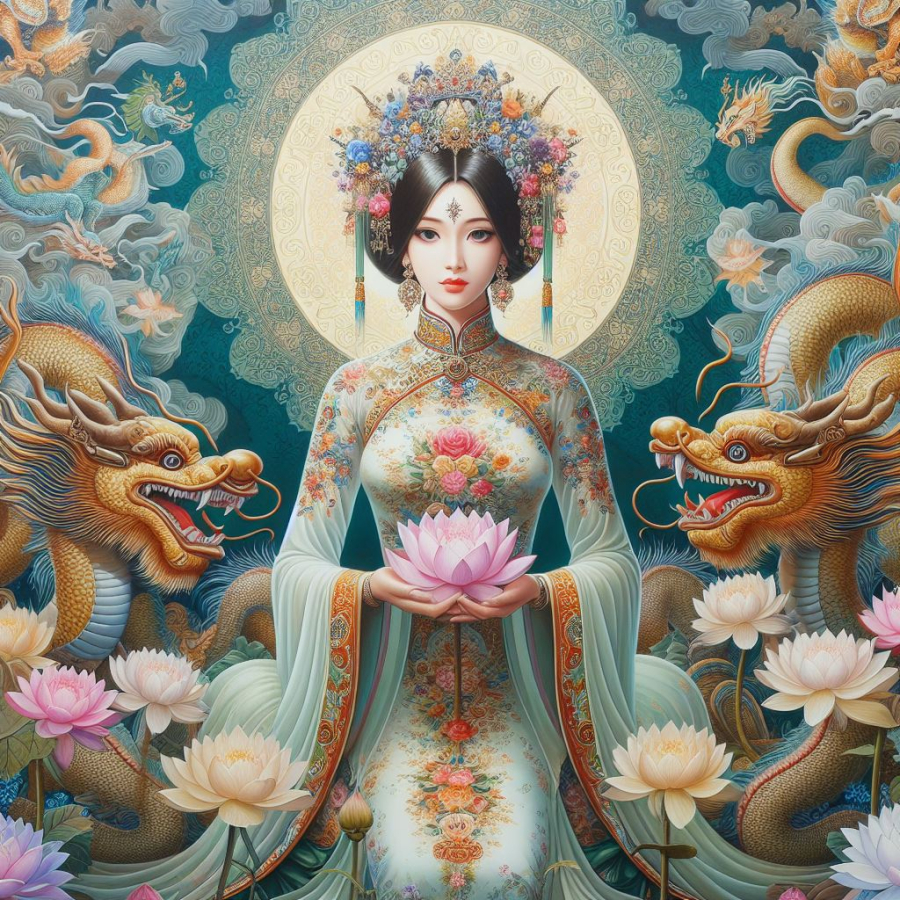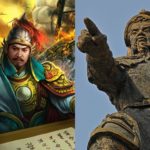During the Tran dynasty, Princess Huyen Tran, the youngest daughter of King Tran Nhan Tong, married King Chiem Thanh. This was a move to expand Dai Viet’s territory in the 13th century. The radiant beauty of the princess became part of the history books and turned her into a long-lasting cultural icon of Vietnam.
The book “Viet su giai thoai” records about Princess Huyen Tran (1287-1340) that in June 1306, following the promise of former Emperor Tran Nhan Tong, King Tran Anh Tong married Princess Huyen Tran to King Chiem Man of Chiem Thanh. As part of the marriage agreement, King Chiem Thanh handed over the territories of O Chu and Ly – the areas that now belong to the southern provinces of Quang Tri and Thua Thien Hue – to Dai Viet as a territorial expansion gesture, contributing to Dai Viet’s southern expansion.

Princess Huyen Tran is the youngest daughter of King Tran Nhan Tong
According to “Dai Viet su ky toan thu,” in 1301, King Tran visited Chiem Thanh and promised to marry Princess Huyen Tran to King Chiem Man, even though he was over 80 years old at the time. After the wedding, King Chiem Man coronated Huyen Tran as Queen.
One year after becoming Queen, King Chiem Man passed away, and Princess Huyen Tran was sent back by King Tran Anh Tong to be rescued by Tran Khac Chung to avoid the funeral customs of Chiem Thanh, according to which the Queen had to self-immolate along with her husband. When she returned to Dai Viet, the princess decided to become a nun. She passed away in 1340 and was revered by the locals, honored as a deity, and a temple was built next to the Nom Son Pagoda. Her death anniversary later became a festival at the Huyen Tran Temple on Ngu Phong Mountain in Hue every year.
Through her journey in a wedding carriage, Princess Huyen Tran became a symbol of reconciliation and friendship between two countries, contributing to strengthening the relationship and bringing peace to the people. The princess’s contribution to promoting stability and harmony is a valuable legacy.

Princess Huyen Tran became a symbol of reconciliation and friendship between two countries
Princess Huyen Tran’s life exudes both purity and nobility, as well as a deep affection for the people. The people not only admire but also respect and understand her thoughts and worries when living in a distant land, becoming a daughter-in-law in a completely new environment. This respect is not only present in villages and temples venerating her in the north, but also extends to the Central region, where Huyen Tran Island lies on the Thua Thien-Hue coast, and a temple in Quang Tri. Although no one knows the exact origin of the island and the temple named after her, people are aware that they are symbols of the longing and love that the people hold for her, an enduring sentiment over time. In history, there are many princesses, but those who have such deep spiritual influence and respect from the people like Huyen Tran are rare. This princess will forever be an inseparable part of Vietnamese history and culture.
Also during the Trần dynasty, Princess An Tu, like Princess Huyen Tran, was one of the rare princesses in Vietnam who married a foreigner.

Princess Huyen Tran is revered by the people as a deity
An Tu Princess, also known as Princess Thien Tu, is the youngest beloved daughter of Emperor Tran Thai Tong – the founder of the powerful Tran dynasty in Vietnam. She is the sister of Tran Thanh Tong and the biological sister of Tran Nhan Tong, two highly respected emperors in Vietnamese history.
There are preserved documents that suggest Princess An Tu performed the role of collecting and conveying important information, described as an outstanding “spy” of the Tran dynasty. However, after the Tran dynasty’s victory over the Yuan army, the royal court organized ceremonies and rewarded the courtiers, but there is no mention of Princess An Tu’s fate.
Examining the Long-Term Impact of the 7th May 1954 Dien Bien Phu Victory
As we mark the 66th anniversary of the victorious battle at Dien Bien Phu on May 7, 1954, it is important to reflect on the monumental impact this event had on the world. Let us take a closer look into the historic significance of this momentous occasion in the Vietnamese people’s struggle for independence.



































